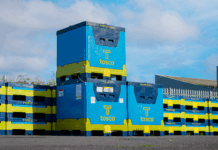
By Felicity Kelly, head of sustainability at Bunzl Australia & New Zealand
With the increasing calls for sustainability, every industry faces the imperative to adapt and innovate, and the packaging sector stands at the forefront of this revolution. A McKinsey & Company survey revealed that 43% of consumers consider the environmental impact of packaging a crucial factor in their purchasing decisions.
This isn’t just passive preference, given that many consumers are actively putting their money where their beliefs are. The survey also highlights that across various product categories, 4 to 7% of buyers are willing to pay a premium of over 10% for more sustainable packaging options.
The willingness to invest in sustainable solutions is a loud and clear call for businesses to innovate and adapt their packaging. But where do you start? Read on to discover the cutting-edge advancements and sustainable solutions reshaping the packaging industry.
The importance of revolutionising packaging and its significance in today’s world
As global awareness of environmental issues escalates, the role of packaging in creating a more sustainable world has come sharply into focus. Here are a few reasons why it’s important to revolutionise packaging:
A catalyst for environmental change
Rethinking packaging can significantly reduce our consumption’s ecological footprint. Sustainable packaging solutions focus on minimising waste, using renewable resources, and improving recyclability. This shift conserves natural resources and reduces the harmful effects of waste accumulation on ecosystems.
Improving brand perception
Revolutionising packaging and adopting sustainable packaging practices signal a brand’s commitment to ecological responsibility. This approach aligns with the values of a growing eco-aware customer base and differentiates the brand in a competitive market. Consequently, sustainable packaging becomes a powerful tool for building trust and loyalty, elevating a brand’s image as a forward-thinking and responsible entity.
The economic rationale
Beyond environmental and ethical considerations, there’s a strong economic rationale for revolutionising packaging. Sustainable packaging can lead to cost savings in the long run, through the efficient use of materials and by fostering a positive brand image that attracts and retains customers. Furthermore, as regulations around packaging waste become stricter, companies adopting sustainable practices early will be better positioned to comply with future legislation, avoiding potential fines and sanctions.
Negative environmental consequences of traditional packaging methods
Traditional packaging methods come with a significant environmental toll in the following ways:
Resource depletion and pollution
Conventional packaging often relies on non-renewable resources, such as plastics derived from fossil fuels. The extraction and processing of these materials contribute to resource depletion and environmental pollution. Moreover, the production process is energy-intensive, leading to increased carbon emissions and a larger carbon footprint.
Waste accumulation and landfill impact
A huge volume of traditional packaging waste ends up in landfills. For instance, the Environmental Protection Agency (EPA) highlights that food and packaging/containers constitute almost 45% of the materials landfilled in the United States. This strains landfill capacity and poses risks of soil and groundwater contamination.
Limited recyclability and lifecycle issues
Many traditional packaging materials are designed for single use and are not easily recyclable. This short lifecycle leads to a continuous production, use, and disposal cycle, exacerbating the waste problem. The limited recyclability of these materials means that they often end up as persistent environmental pollutants.
The role of technology in revolutionising packaging solutions
Technology is both a catalyst and an enabler for transforming packaging. It revolutionises packaging in the following ways:
Advancements in material science
Cutting-edge research and technology have led to the creation of new renewable materials. These new materials include biodegradable polymers, compostable materials, and plant-based packaging. Furthermore, lightweight packaging designs are being developed to lessen shipping costs and carbon footprints.
Smart and intelligent packaging
Technology has given rise to smart packaging solutions. These include intelligent systems that can track freshness, display product lifecycle information, or even change colour to indicate spoilage. Such innovations enhance the consumer experience and reduce food waste.
Recycling and upcycling technologies
Technological advancements in recycling processes are essential in dealing with post-consumer packaging waste. Innovations in sorting and processing technologies have improved the efficiency of recycling operations, allowing for a greater variety of materials to be recycled and reused.
Data-driven approach
Integrating real-time data and analytics into packaging design allows for continuous testing and optimisation. By analysing factors like durability, environmental impact, and cost, companies can refine packaging designs to be more sustainable and efficient.
Customisation and 3D printing
3D printing technology has opened up new possibilities for customised packaging solutions. It allows for the creation of packaging that is precisely tailored to the product’s dimensions, reducing material waste. This technology also facilitates rapid prototyping, enabling quicker adaptation and innovation in packaging design.
Emerging trends and future prospects in sustainable packaging
Some of the key trends shaping sustainable packaging include:
Biodegradable and compostable materials
These materials offer more efficient and practical replacements to traditional plastics. For instance, in the food service industry, sustainable packing material alternatives such as wood pulp paper, bagasse, and bamboo are being used to create packaging that is not only compostable but also renewable. These materials break down naturally, reducing their impact on landfills and the environment.
Edible packaging solutions
Edible packaging materials, like seaweed-based films, represent a novel and exciting trend in sustainable packaging. These solutions are made from natural, often food-based materials, and can be consumed along with the product or composted.
Smart and active packaging
The integration of technology into packaging, leading to smart and active packaging solutions, is a growing trend. These packaging types can extend shelf life, monitor freshness, display information, and even interact with consumers, all while reducing waste and improving sustainability.
Simplification and minimalism
There is a move towards simplification and minimalism in packaging design. This trend not only appeals aesthetically but also reduces material use and waste. Minimalist packaging often involves using fewer materials, which simplifies recycling and reprocessing.
Upcycling waste materials
Upcycling waste into packaging materials is a trend with dual benefits. It involves converting waste products like agricultural residue or recycled plastics into new packaging materials. This approach reduces waste and creates a circular economy where materials are reused and repurposed rather than discarded.
These emerging trends indicate a future where sustainable packaging is the norm. The packaging industry is set to continue its journey toward more sustainable practices driven by innovation, corporate environmental responsibility, and consumer preferences.
The circular economy concept will gain more traction, emphasising the reuse and recycling of packaging materials. This future vision of sustainable packaging is an environmental imperative and a catalyst for creative and sustainable growth in the packaging industry.
Embrace sustainable and innovative packaging solutions
The journey towards creating sustainable packaging is filled with challenges but abundant opportunities for innovation and environmental stewardship. As we have explored, the shift from traditional methods to sustainable practices is not just beneficial but essential for businesses in today’s environmentally-conscious landscape.
Leveraging innovative materials, smart technologies, and sustainable practices will help you resonate with the growing environmentally aware and sustainability-seeking customer base. Now is the time to lead the charge, innovate, and be part of the sustainable packaging revolution.












